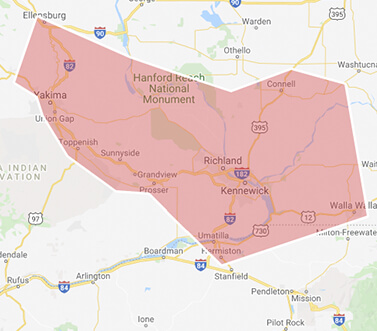back to blog
 You rely on your home’s electrical system on a daily basis — and more than likely, you take it for granted unless something goes wrong. Unlike some other problems within your home (like that broken garbage disposal or bad window seal), however, an electrical issue can be serious and even dangerous. This is why it’s so important for homeowners to be aware of some of the most common signs of when you may need electrical repair in their home.
You rely on your home’s electrical system on a daily basis — and more than likely, you take it for granted unless something goes wrong. Unlike some other problems within your home (like that broken garbage disposal or bad window seal), however, an electrical issue can be serious and even dangerous. This is why it’s so important for homeowners to be aware of some of the most common signs of when you may need electrical repair in their home.
3 Warning Signs Your Home Needs Electrical Repair
 You rely on your home’s electrical system on a daily basis — and more than likely, you take it for granted unless something goes wrong. Unlike some other problems within your home (like that broken garbage disposal or bad window seal), however, an electrical issue can be serious and even dangerous. This is why it’s so important for homeowners to be aware of some of the most common signs of when you may need electrical repair in their home.
You rely on your home’s electrical system on a daily basis — and more than likely, you take it for granted unless something goes wrong. Unlike some other problems within your home (like that broken garbage disposal or bad window seal), however, an electrical issue can be serious and even dangerous. This is why it’s so important for homeowners to be aware of some of the most common signs of when you may need electrical repair in their home.
Warning Sign 1: Circuit Breakers Keep Tripping
While the occasionally tripped circuit breaker isn’t necessarily a cause for concern (in fact, it means your electrical panel is doing its job), frequent breakers tripping could be a sign of a more serious underlying problem. If you find yourself needing to reset breakers (especially the same breakers) more than a couple times per week, this could indicate that your home’s electrical system is overloaded. If so, it may be time for an electrical panel upgrade, especially if you have an older electrical panel currently.Warning Sign 2: Switches & Outlets Suddenly Stop Working
Have you noticed that one of your wall outlets or switches has suddenly stopped working? If so, then it’s time to call an electrician for a repair. While non-functioning switches and outlets aren’t usually the sign of a serious issue, they should still be repaired promptly — and this is not a repair you should attempt yourself. Even if it seems like it would be an “easy” DIY repair, you could be putting yourself at risk of electrocution if you don’t know what you’re doing. In fact, only a licensed electrician should be attempting any sort of residential electrical repairs, such as electrical switch and outlet repairs.Warning Sign 3: Sparking From Outlets With a Persistent Burning Smell
An occasional blue spark when you plug in an appliance is generally not anything to worry about, but if you’re noticing frequent sparking (especially with sparks that are yellow in color), this could be a sign of a more serious wiring problem. The same applies if the sparking is accompanied by a burning smell, or if you notice a burning smell coming from any of your home’s outlets or switches. This is something you’ll want to act quickly on by calling a licensed electrician, as it could pose a threat of electrical fire if not resolved. Call us at 509-545-9848 to schedule an emergency electrical service ASAP!Electrical Repair Services With Our Licensed Electricians
If your home is showing any of these signs of electrical problems, it’s better to act sooner rather than later. Our team at Campbell & Company is here to help with all your home electrical needs in Pasco, Yakima, and the surrounding areas. To find out more about how we can help with your electrical needs, contact us or give us a call at 509-545-9848 and set up an appointment.
Areas We Serve
Benton City | Burbank
| Ellensburg | Grandview | Kennewick | Kiona | Mattawa | Mesa
| Moxee | Pasco | Richland | Yakima
| Ellensburg | Grandview | Kennewick | Kiona | Mattawa | Mesa
| Moxee | Pasco | Richland | Yakima

